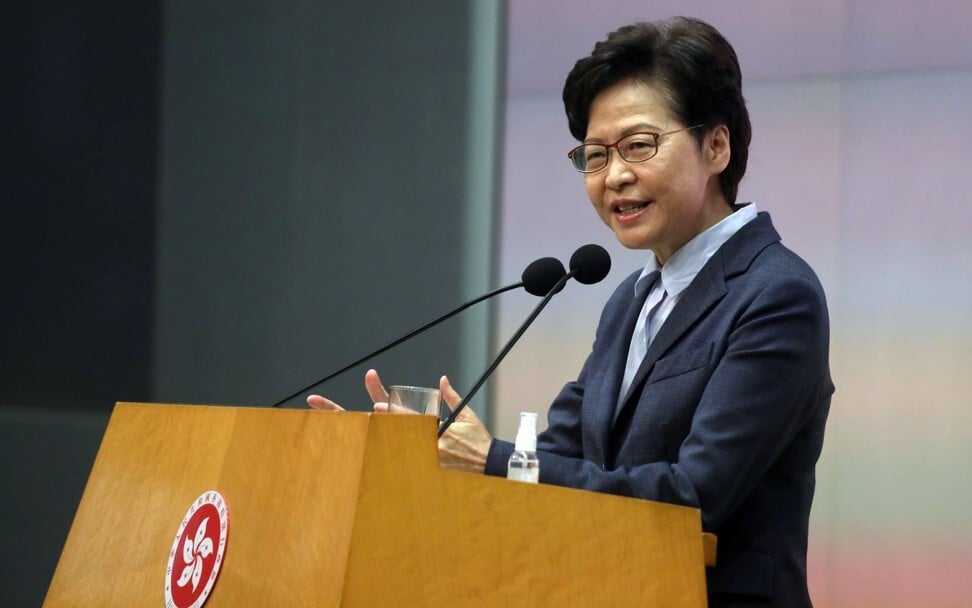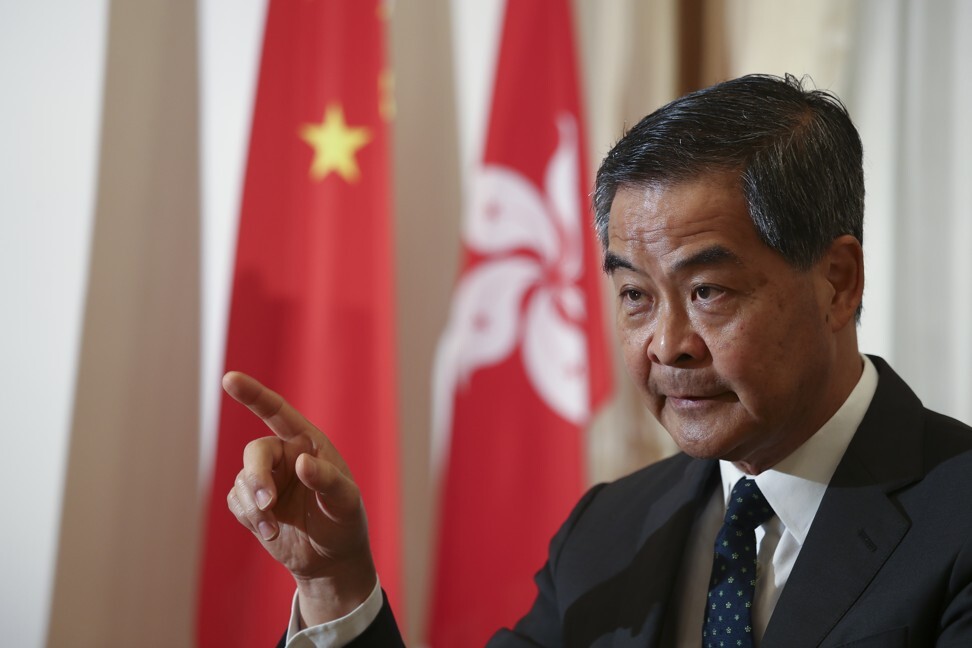
Coronavirus: Hong Kong leader says sudden reversal of quarantine policy for residents returning from mainland China ‘not forced by outside pressure’
- Chief Executive Carrie Lam says policy was adjusted only when it became apparent how many ‘Return2HK’ travellers were losing quarantine exemptions
- Her predecessor CY Leung criticised the original arrangements, which designated all of Guangdong province as higher risk for Covid-19 on the basis of one infection
Under the original arrangements, whole provinces and municipalities could be categorised as medium- or high-risk areas based on the emergence of just one new infection, forcing those previously eligible to return to Hong Kong without undergoing quarantine to isolate for 14 days.

Before the policy change, Hong Kong used a province or municipality as a precise unit for an area of medium or high risk. By drastically reducing the size of the mainland areas deemed higher risk, many Return2HK travellers who would be required to undergo compulsory quarantine under the old system did not need to self-isolate at a designated hotel for two weeks.
“[The reversal] is a result of an ‘internal self-regulation’ and not prompted by any pressure or remarks from the outside,” Lam told the media on Tuesday ahead of her weekly meeting with her Executive Council.
Lam sought to brush aside speculation the about-face was triggered by her predecessor Leung Chun-ying, who took to social media on Saturday to challenge the government’s initial decision.
The saga unfolded earlier that day when health authorities first announced their decision to exclude residents coming back from Guangdong province from the Return2HK scheme after a local case was detected in Guangzhou’s Liwan district.
Soon afterwards, Leung questioned the rationale for halting the arrangement because of a single Covid-19 case in Guangzhou, the provincial capital.
That night, the Constitution and Mainland Affairs Bureau announced a U-turn, greatly reducing the designated area of risk to a single residential building in Liwan district. This meant Hong Kong residents who had stayed there could not be exempted from quarantine under the scheme when they returned to the city.
The initial decision on Guangdong raised questions on how justified it was to classify the country’s largest province, which has around 126 million people, as a medium-risk area because of one infection in a city district.
Under the “Return2HK” scheme – first launched in last November with Guangdong province and expanded in April to cover the rest of the mainland – Hongkongers returning to the city would be exempt from quarantine if they had not been to other places for 14 days. But they would not be entitled to such exemptions if they were departing from a “medium- or high-risk” province.
Hong Kong’s U-turn on Guangdong risk status not based on CY Leung critique: sources
Lam said government officials were not forced to give the issue too much thought because previous areas requiring such exclusions were Anhui and Liaoning province, where not many Hong Kong people live.
“The problem only became apparent last week when it affected Hongkongers in Guangdong,” she said.
“When we reviewed the mechanism put in place in April, it was not the most appropriate mechanism,” she said, conceding it was “not very proportionate”.

Asked about her involvement in the saga, Lam stressed she only learned of the policy details once her officials had made their decisions.
She said health officials were not to blame, including Secretary for Food and Health Sophia Chan Siu-chee, who were following the mechanism’s protocols.
The government from now on would follow National Health Commission assessments for identifying areas of medium or high risk, she said.
University of Hong Kong microbiologist Dr Ho Pak-leung supported the new approach, citing the impracticalities of leaving the task to the local government.
Ex-Hong Kong leader has government on the defensive. Is he planning a comeback?
“It’s better than Hong Kong [assessing risk levels] by themselves, especially because it is impossible for Hong Kong to know the pandemic situation on the mainland within 24 hours,” Ho told a radio show on Tuesday.
A total of 79,870 people arrived in Hong Kong under the “Return2HK” scheme between its introduction and the end of February this year, official figures show.
Around 536,800 Hong Kong residents stayed in Guangdong province for six months or more in 2020, according to the Census and Statistics Department.
Additional reporting by Rachel Yeo


